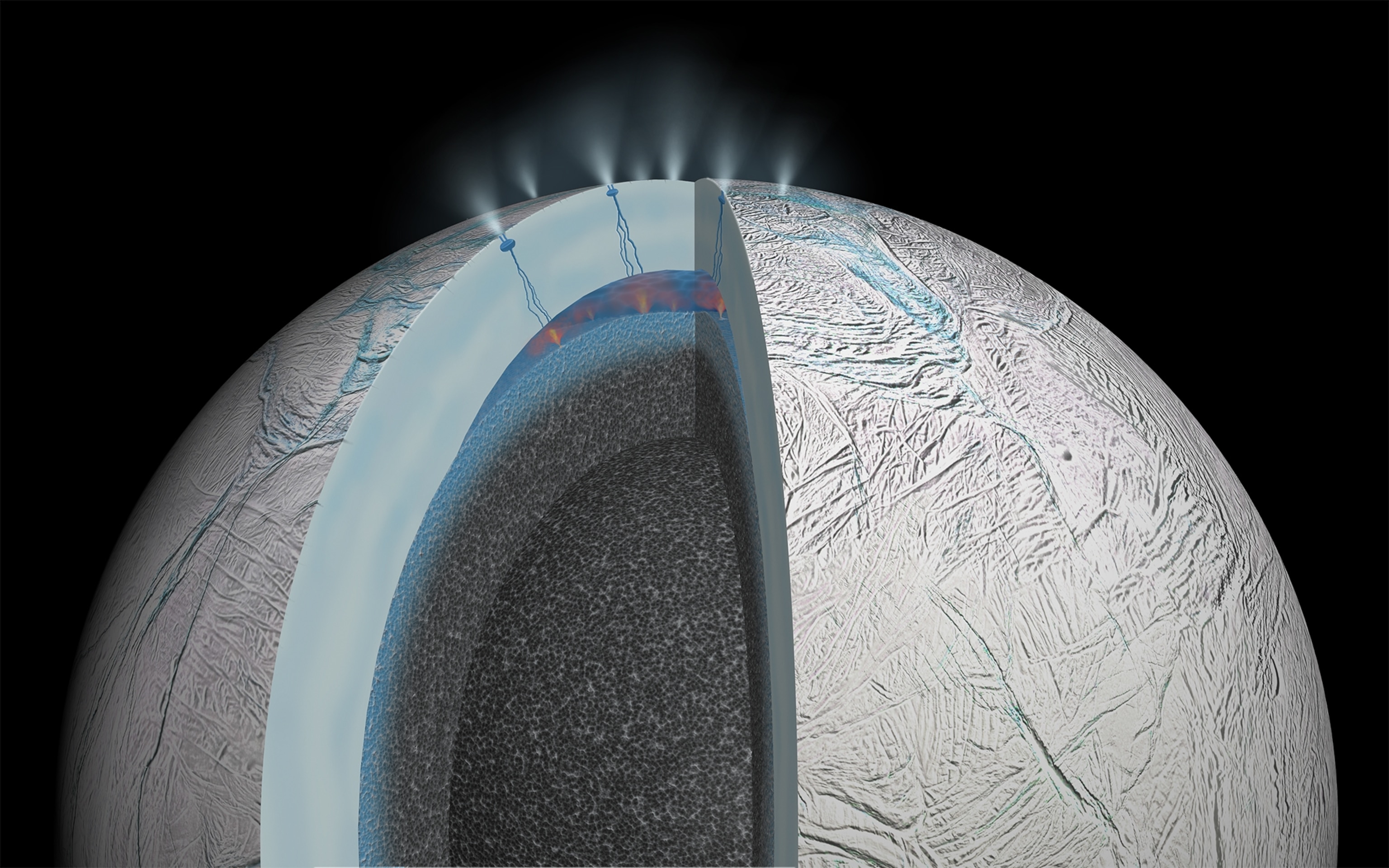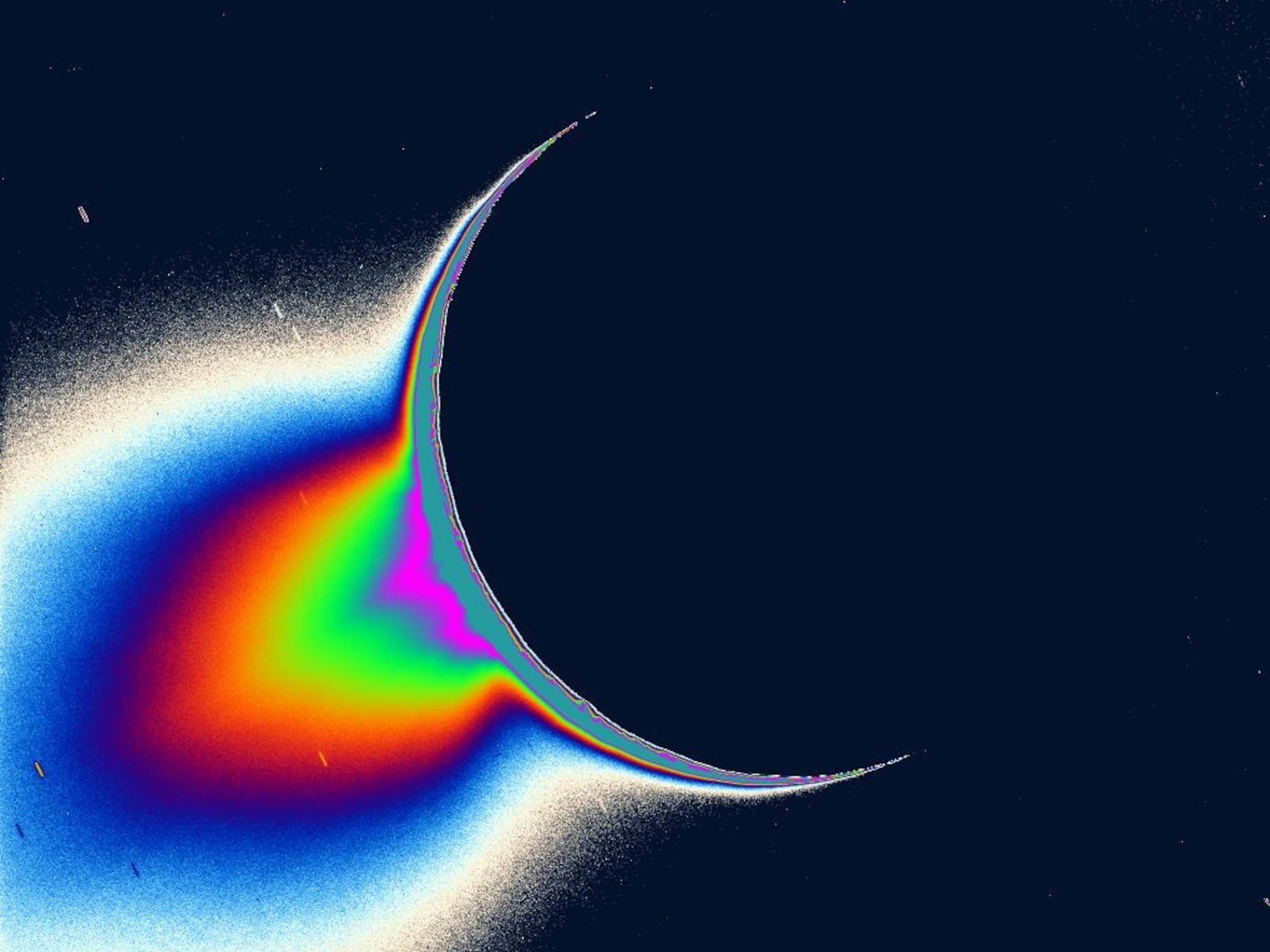
Saturn Moon Just Got More Interesting in Hunt for Alien Life
Particles spewed from its ice-encrusted ocean hint at the same kind of chemistry that might have jump-started Earth’s biology.
Saturn’s icy moon Enceladus has tantalized scientists for years as a place where life could exist (in theory), and the case is now stronger with new evidence of hot springs beneath the moon's icy crust.
The evidence, reported Wednesday in the journal Nature, comes in the form of icy, salty dust grains erupting from an ocean under the moon’s frozen crust. The chemical nature of those grains suggests the same sort of environment, writes Gabriel Tobie of the University of Nantes, France, in an accompanying Nature commentary, that “might have been the birthplace of the first living organisms on Earth.”
The dust grains were discovered several years ago in Saturn’s E ring, its largest ring, which planetary scientists believe is fed by material from geysers that spew from cracks in the surface of Enceladus. The geysers are fed in turn by the subsurface ocean, whose long-suspected presence was confirmed by the Cassini spacecraft last year.
NASA sees moons as promising targets in the hunt for alien life, and is in the early stages of planning a robotic mission to explore the ice-covered ocean on Jupiter's moon Europa. If they can work out the technology to crack through Europa's ice and look for signs of habitability or even life, Enceladus might be next.
This new research reveals that some of the dust comes in the form of tiny particles just a few hundred-millionths of an inch across and rich in silicon dioxide. “We think,” says lead author Hsiang-Wen Hsu, of the University of Colorado, Boulder, “it indicates ongoing hydrothermal activity”—that is, interactions between water and rock.
If so, it could be a crucial discovery. Water in liquid form is considered essential to life by astrobiologists. So is a supply of complex, carbon-based compounds, which could easily have come to Enceladus riding on comets. (See "The Hunt for Life Beyond Earth.")
But a third, key ingredient is a source of energy that life-forms can use for nourishment, and the silicon dioxide points to just such a possible source: seawater circulating through vents in hot rock at the bottom of Enceladus’s ocean. “If this is indeed true,” says Kevin Hand of NASA’s Jet Propulsion Laboratory, a National Geographic Emerging Explorer, “it would imply activity akin to the ‘Lost City’ in the Atlantic Ocean.”

Vents like these also release hydrogen and methane, which microbes can thrive on, says Hand, who was not involved in the research. “So what we may be talking about is this warm, percolating hydrothermalism that could be a great environment for any life that might exist, or a great environment for the origin of life itself.” (See more about deep-sea vents on Earth in "Dawn in the Deep.")
That doesn’t mean life is actually there, of course—only that the right conditions might be present. And even that depends on whether the reasoning presented by Hsu and his colleagues holds up. “It’s an extraordinary claim,” says Hand, “so we need to be sure there isn’t another explanation.” But, he adds, “I’m having a hard time coming up with an alternative.”
Hand’s own focus is on Jupiter’s moon Europa, another ice-covered body with a subsurface sea, and he’s involved with the Europa Clipper mission that was included in the White House’s 2016 budget. But he’s an Enceladus fan as well.
“It just continues to get more interesting,” he says. “The Cassini mission will come to an end in 2017, and we clearly need to get out to Enceladus soon, to continue our exploration of this curious little ocean world.”
Follow Michael D. Lemonick on Twitter.





